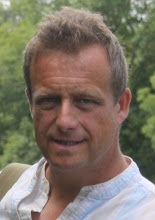An invitation to participate in FACT's Bold Street Project in 2007 resulted in a walk through the street's closed spaces with researcher Laura Yates.
Bold Street in warm sunshine and hard shadows. A piece of found text on my way to the railway station set the tone for the walk; WHAT WAS PAST IS NOW. A touchstone, a mantra, a remembered line for the exploration of dead bank vaults, a burned out church, the dressing rooms of a Georgian concert hall, the soft cellar of a car showroom long concreted into shopped oblivion. Gloomy capitals and refurbished shops, a parade of shops and changing tenants, the gentle subtleties of change over two centuries. I stood in the FACT reception space and looked at old slate roofs, higgledy-piggledy chimneys, windows into empty rooms and attic flats, cool spaces and dead spaces. The newness of street art, Metroscopes; civic furniture, in a new urban space, Ropewalks Square; the pomposity of explanation derided by SK8BD graffiti, club stickers, underground movements, pictures of a leering Tony Benn advertising a Socialist rally, a discussion of democracy or a club night stealing the clothes of revolution.
The journey was to be from top to bottom or bottom to top. The buildings that would give us access to their hidden spaces and unknown floors visited in series as if on a journey, as if paralleling the street we would smash our way from one building to the next through a hundred first floor rooms; empty store room, office, unexpected bedroom, night club, bar, clothes shop, bathroom, brothel, concert room, classroom, hairdressers’; to emerge panting on Berry Street in a cloud of dust and falling brick, still twenty feet above the ground. Walking, the reality is always different. We saw more pigeon-spattered smokers’ haunts than I had expected. Met more people with stories, stoked more interest in unexpected people, broke the work crust to find interest and warmth beneath.
We began in the massive banking hall and redundant vaults of a dead bank that still gets customers; fine wooden doors, rich tiling, high plaster coving. Edwardian dignity broken now into cubicles, workstations, seating areas. Sunlight through dusty glass impossible to clean behind grilles, bars, mesh, the abandoned security apparatus of a building that stored gold bullion. The vaults were heavy, old fashioned, solid solid. Impossibly heavy doors that swung at a finger’s touch and had bolts the thickness of a man’s arm, open now and used for storing files. And behind the vaults, a second skin, brick walls and exposed pipework grimly suggestive of gas chambers. Walls that seemed to grow and shift in their subterranean darkness. They left grey corridors narrowing to nothingness, swallowed brick staircases, made spaces too small for live people and created overlooked rooms full of 1950s accounts, trade descriptions and arrangements with newly free African states; this on a street named after the slave-trading family that owned the land. (Distant earth-memories in damp and gloom, earth-memories of fields and trees and hedge-boundaries, rope walks and country lanes on the edge of the town.) Pale brickwork grey with moss, like a man-made world at the bottom of the sea, a place of endless darkness and soft strange creatures. The first of our ghost stories, a myth sprung to scare the young female office clerks, an erotic frisson connected to darkness and unexpected presence. Or the need to familiarise and populate that dead darkness, those indifferent shifting walls.


No comments:
Post a Comment